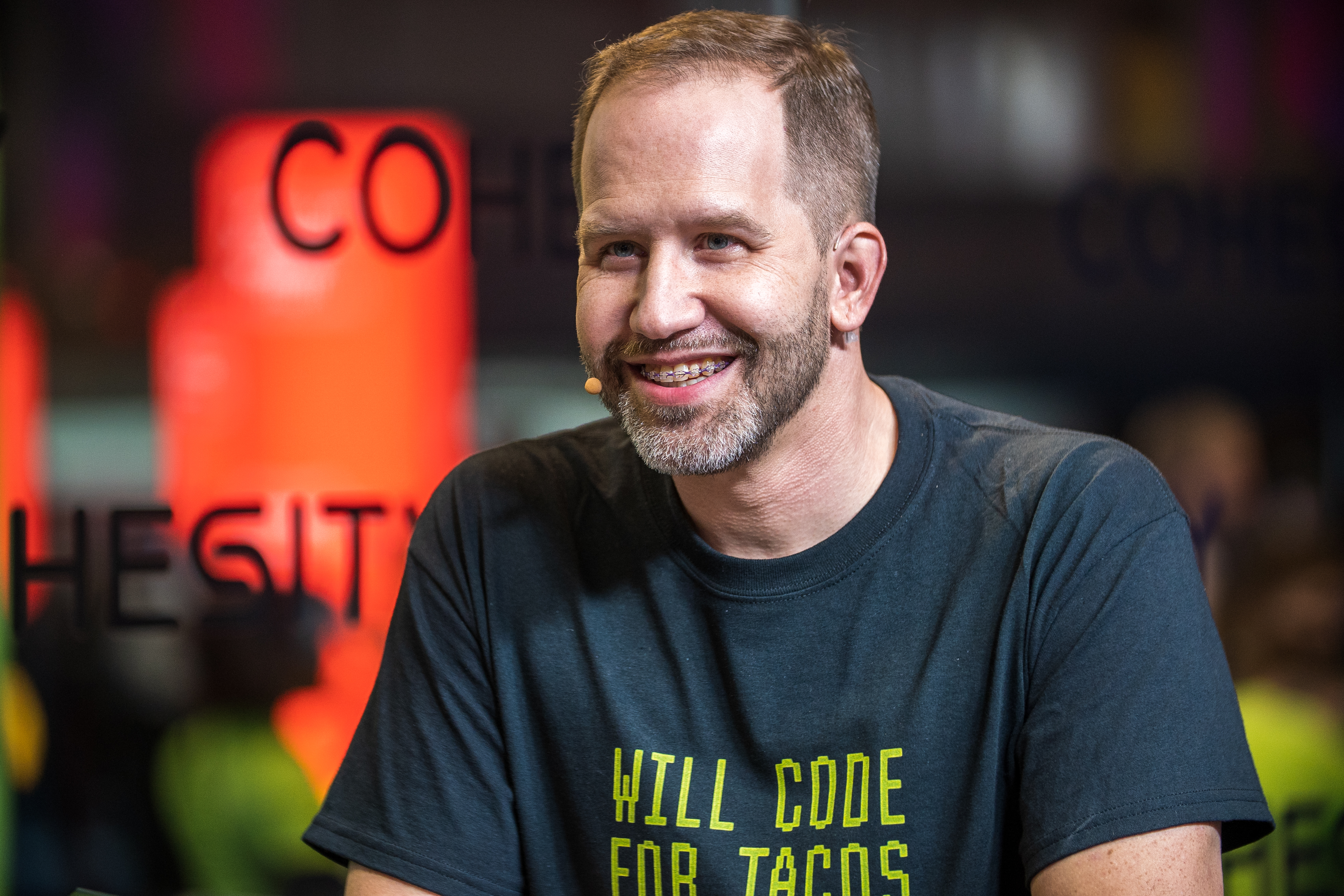 APPS
APPS
 APPS
APPS
 APPS
APPS
Students in community college know that becoming a developer is a smart career choice. But learning to code means choosing from an array of languages. Without a crystal ball to the future, predicting the best bet is a tough decision to make.
The bigger question may be if learning a coding language is really going to be necessary at all. Instead of stressing over whether to become a Java expert or deep dive into C#, Microsoft Corp. Partner Program Manager Scott Hanselman (pictured), advises students to prepare for a democratized and inclusive future — one where coding is simplified to make it within the reach of everyone.
“Rather than thinking about learning how to code, why not think about learning how to think? And learning about systems thinking?” Hanselman asked. “Why don’t we focus on standards where we can interoperate — where we can accept that the reality is a hybrid cloud?”
Hanselman spoke with Stu Miniman and Rebecca Knight, co-hosts of theCUBE, SiliconANGLE Media’s mobile livestreaming studio, during the Microsoft Ignite event in Orlando, Florida. They discussed Microsoft’s initiative to empower ordinary citizen developers, bringing programming to the people (see the full interview with transcript here).
Focusing on standards for interoperability in a hybrid-cloud environment is the smart path forward, according to Hanselman. “Things like Azure Arc … allow us to connect multiple clouds, multivendor clouds together,” he said. “When we mean inclusion, we need to mean everyone; we need to include everyone.”
Announcements at this week’s Ignite event add to the multiple ways people can now program without needing in-depth technical knowledge, according to Hanselman. He lists options from the simplest drag-and-drop features in Microsoft Power Apps to programming with C# on a tiny microcontroller to applying machine-learning algorithms in MS Excel using the analytics of Power BI.
Accessibility to these tools is key to inclusion, Hanselman pointed out. “If the site isn’t accessible, if Visual Studio as a tool isn’t accessible, if you’re training your AI in a non-ethical way, you are consciously excluding people,” he said. “Including everyone means including every language and as many standards as you can.”
Although the inclusive all-languages and all-standards model “might sound a little bit like a Tower of Babel,” Hanselman said it’s based on the common standards of HTTP, REST, JSON and JavaScript. “We’ll use those building-block technologies and then let people do their own thing.”
Here’s the complete video interview, part of SiliconANGLE’s and theCUBE’s coverage of Microsoft Ignite:
Support our open free content by sharing and engaging with our content and community.
Where Technology Leaders Connect, Share Intelligence & Create Opportunities
SiliconANGLE Media is a recognized leader in digital media innovation serving innovative audiences and brands, bringing together cutting-edge technology, influential content, strategic insights and real-time audience engagement. As the parent company of SiliconANGLE, theCUBE Network, theCUBE Research, CUBE365, theCUBE AI and theCUBE SuperStudios — such as those established in Silicon Valley and the New York Stock Exchange (NYSE) — SiliconANGLE Media operates at the intersection of media, technology, and AI. .
Founded by tech visionaries John Furrier and Dave Vellante, SiliconANGLE Media has built a powerful ecosystem of industry-leading digital media brands, with a reach of 15+ million elite tech professionals. The company’s new, proprietary theCUBE AI Video cloud is breaking ground in audience interaction, leveraging theCUBEai.com neural network to help technology companies make data-driven decisions and stay at the forefront of industry conversations.